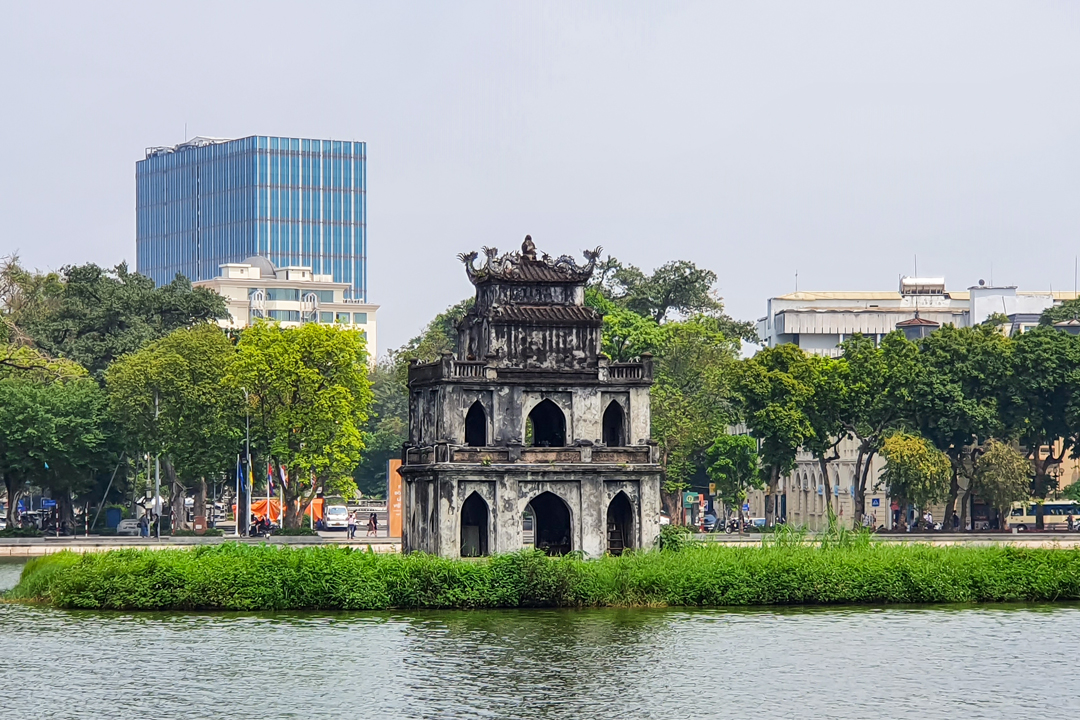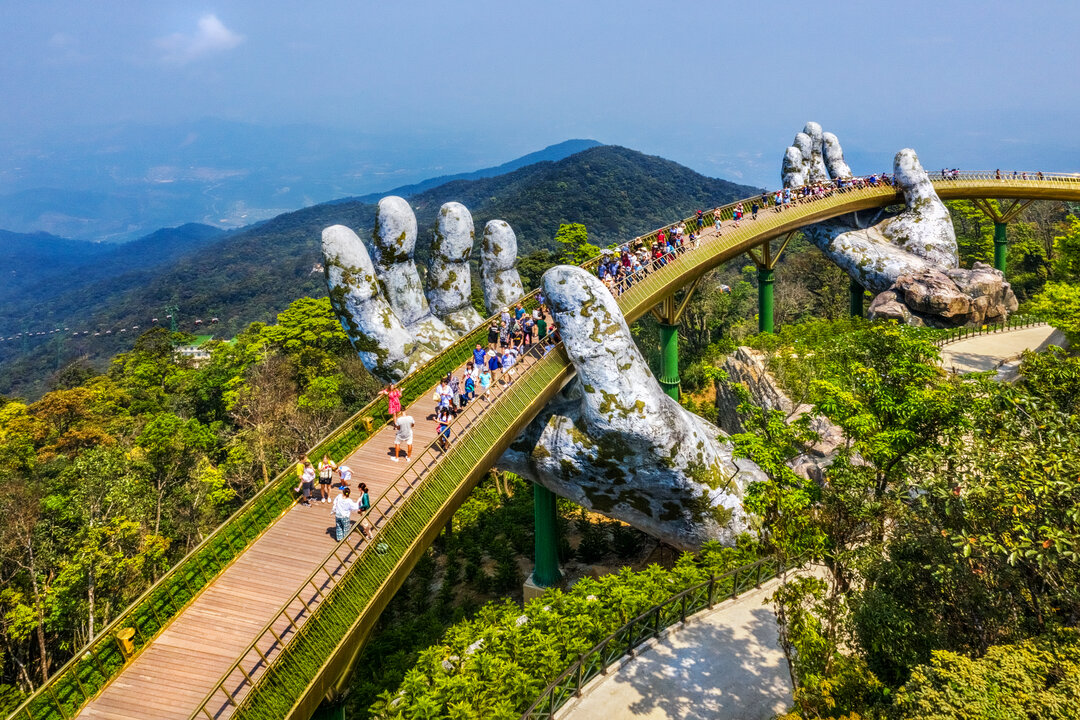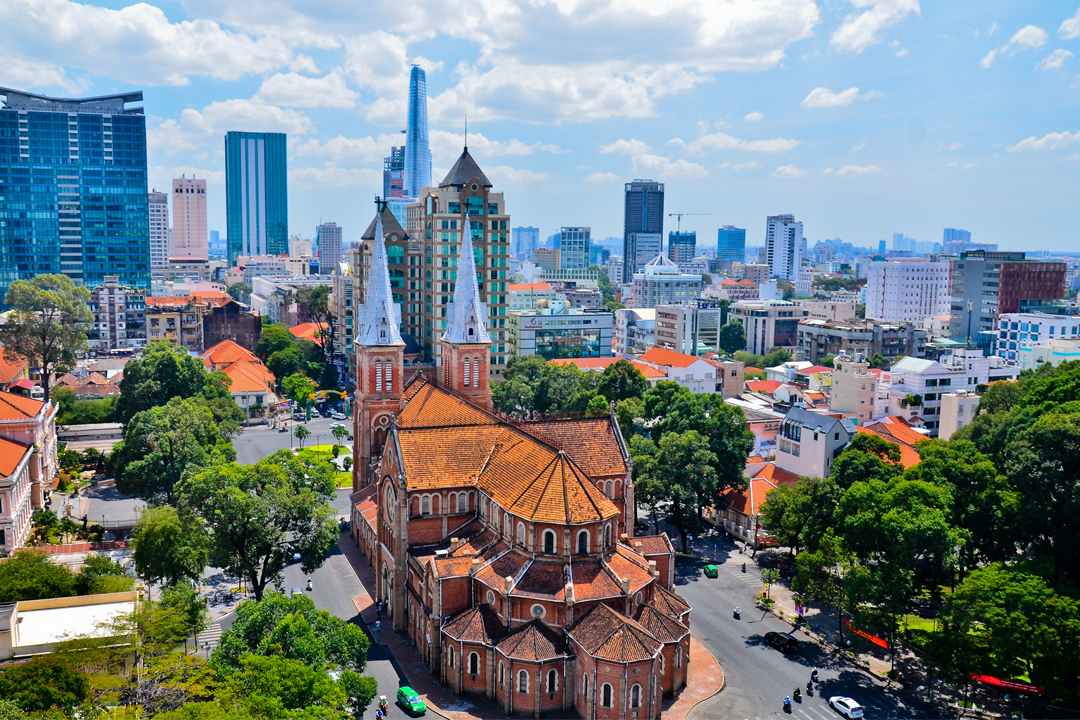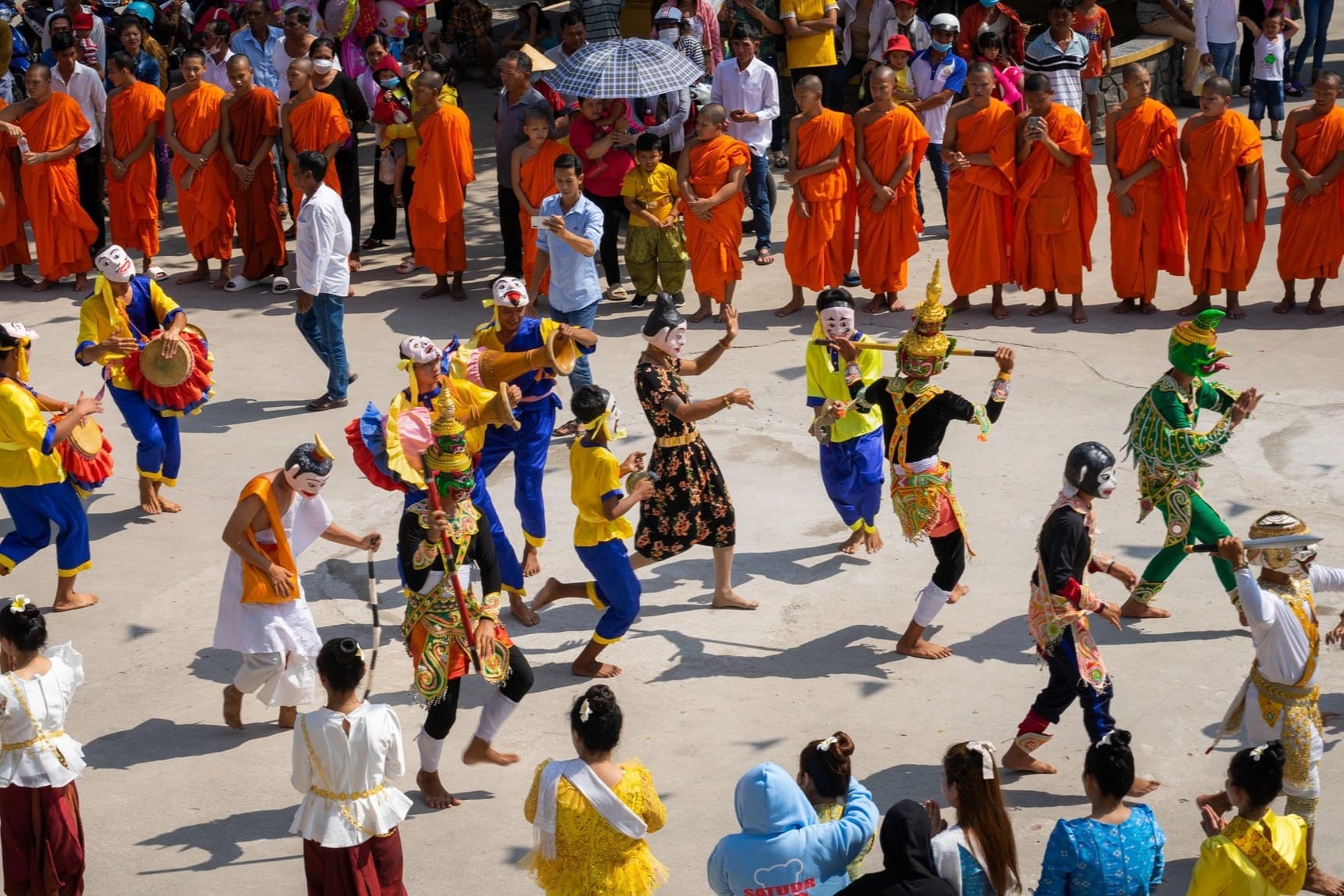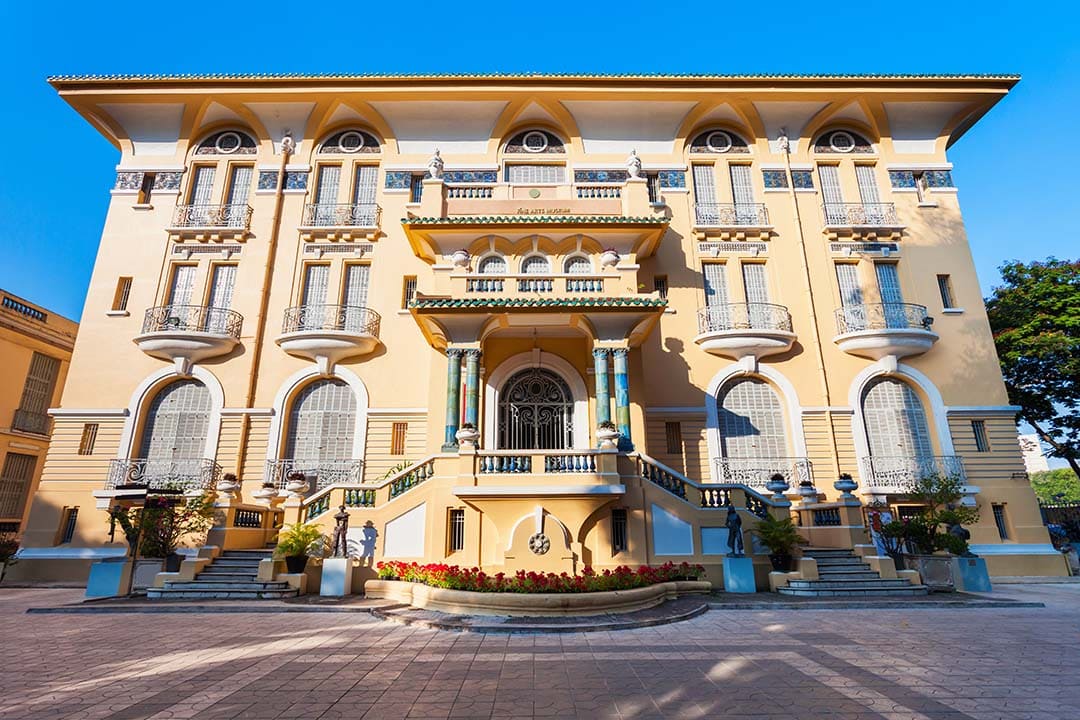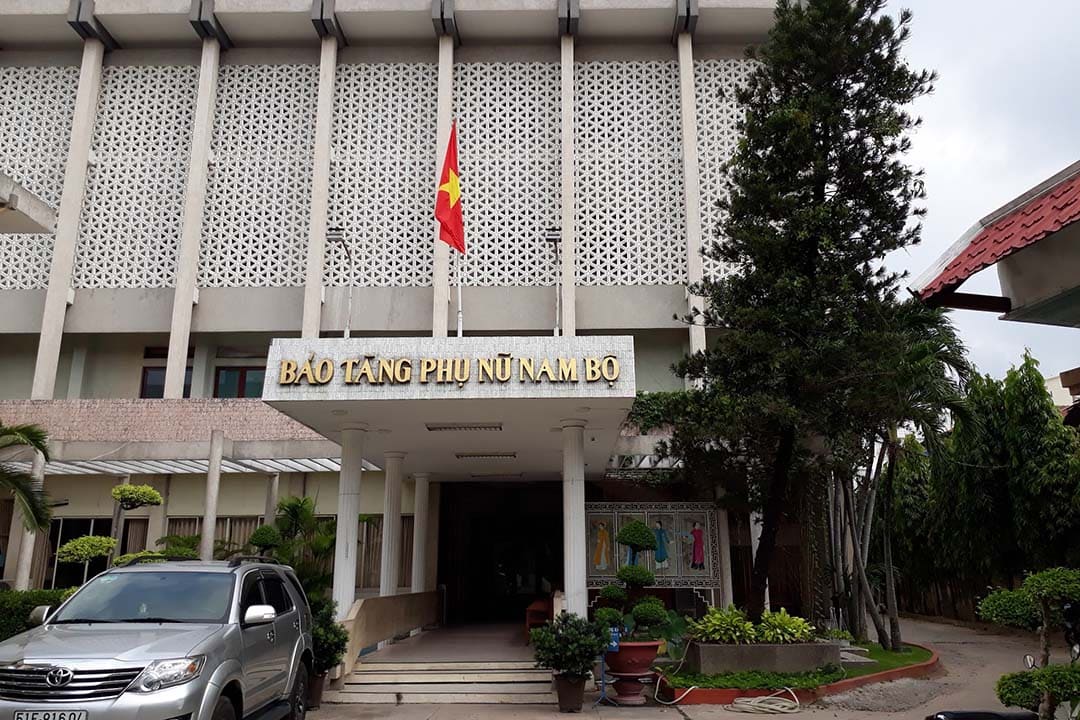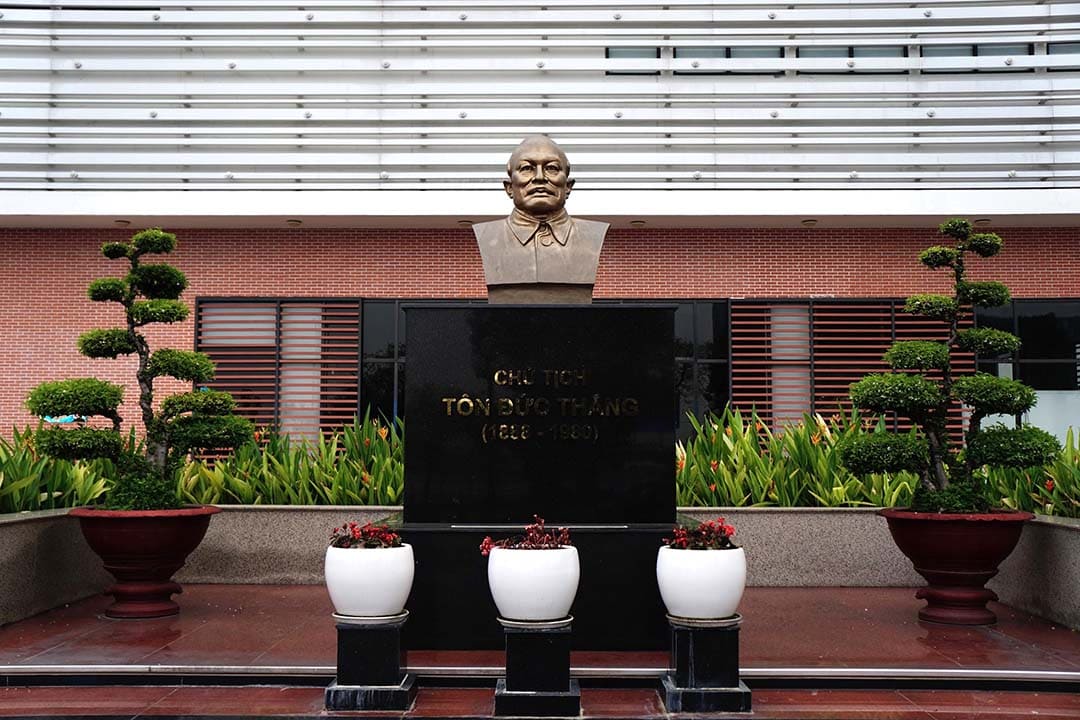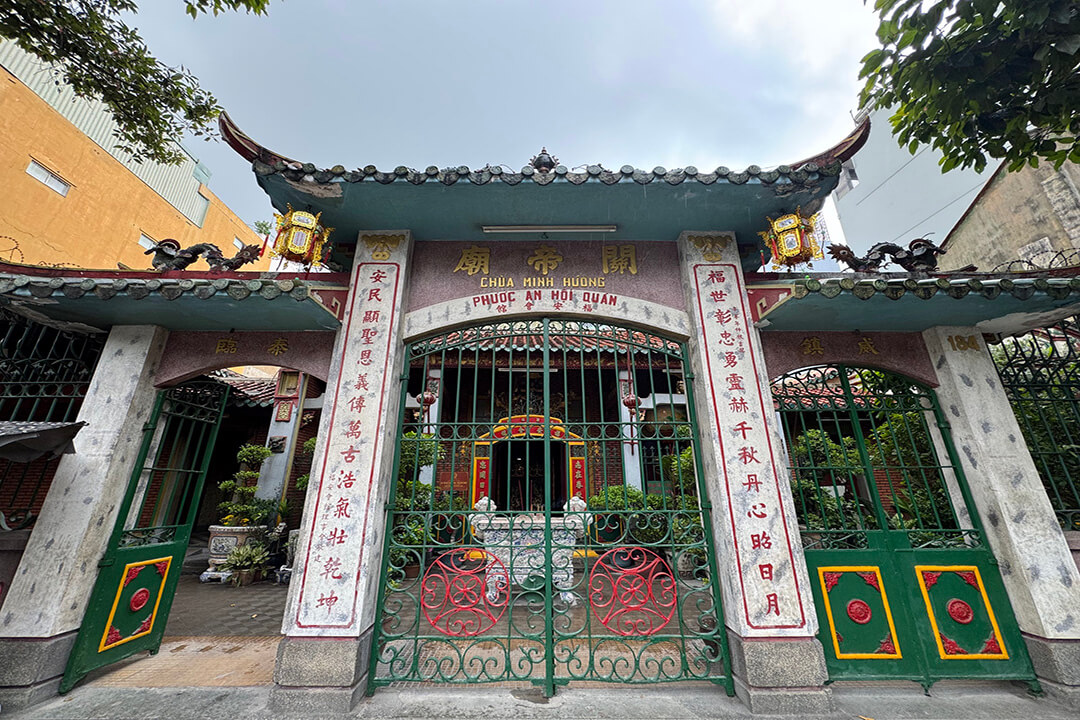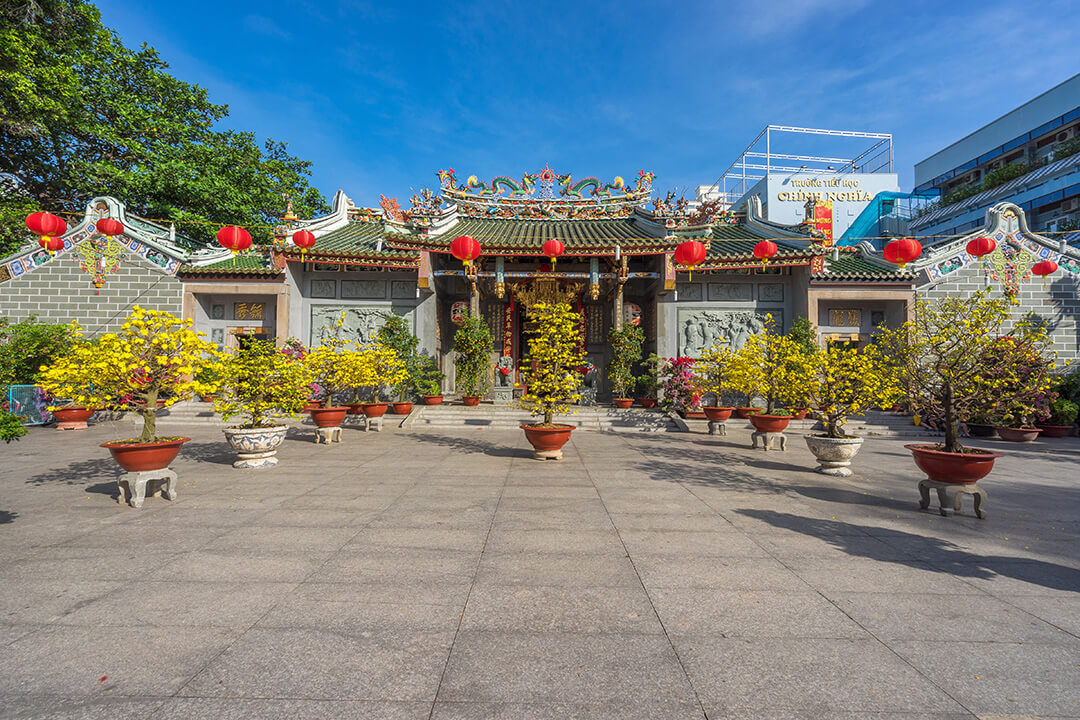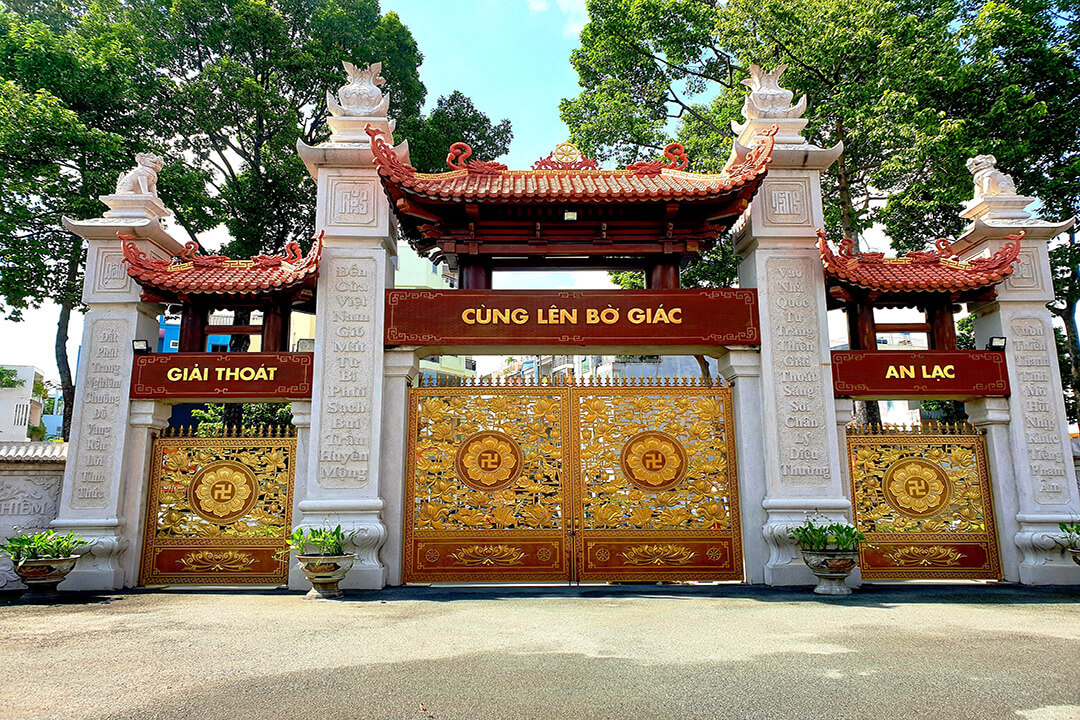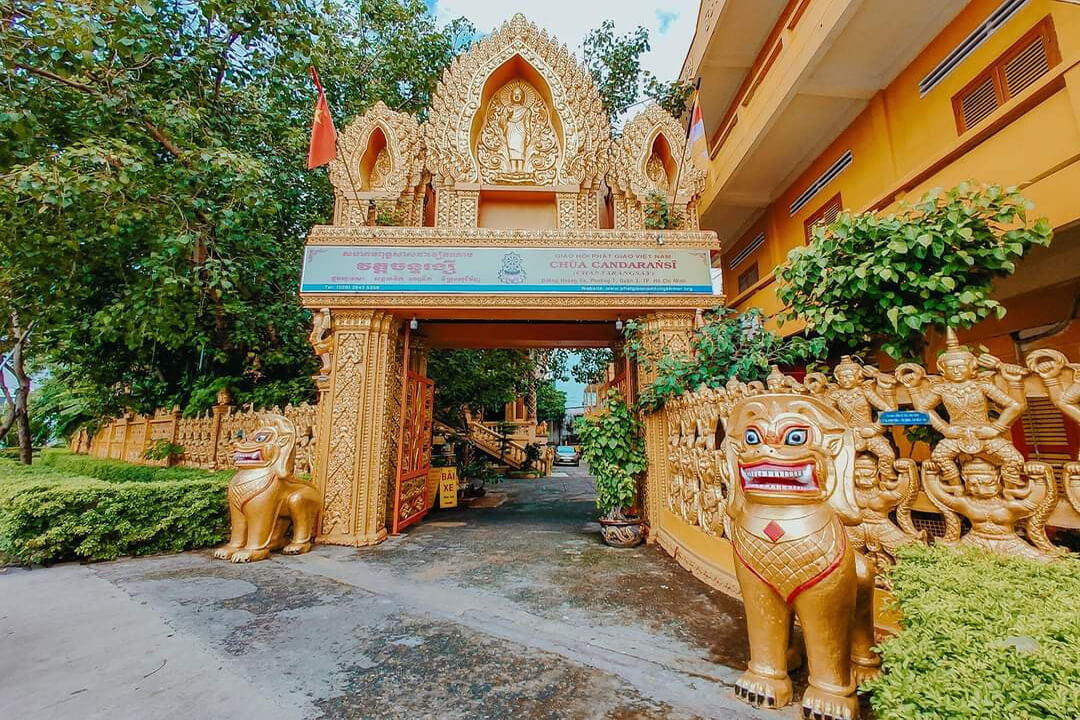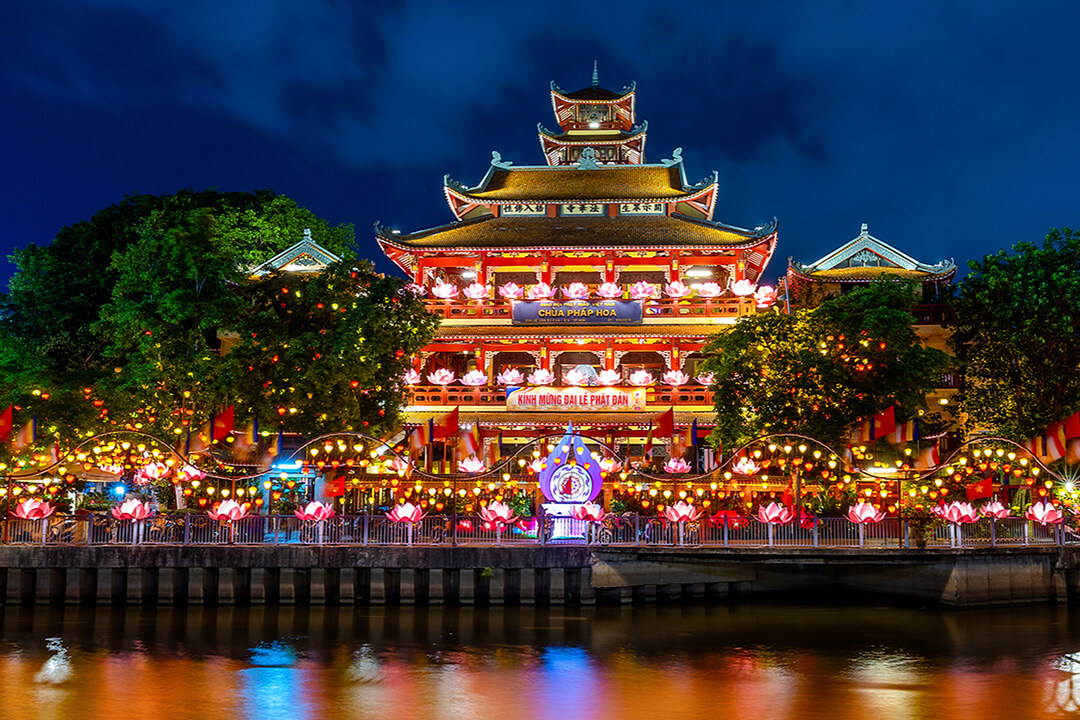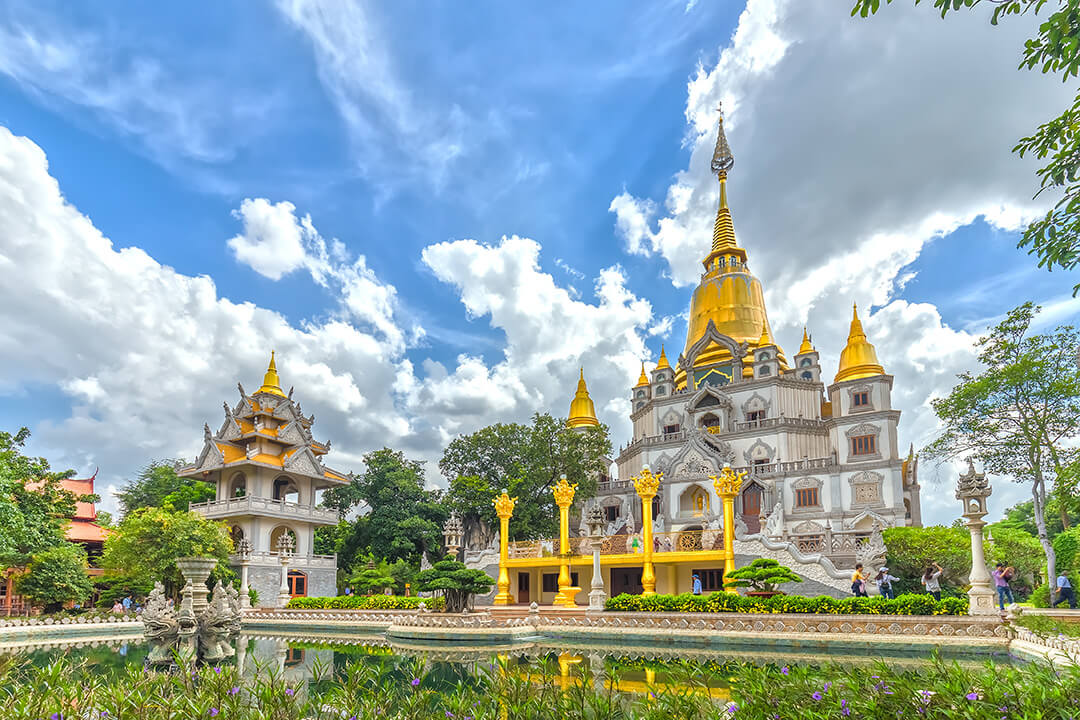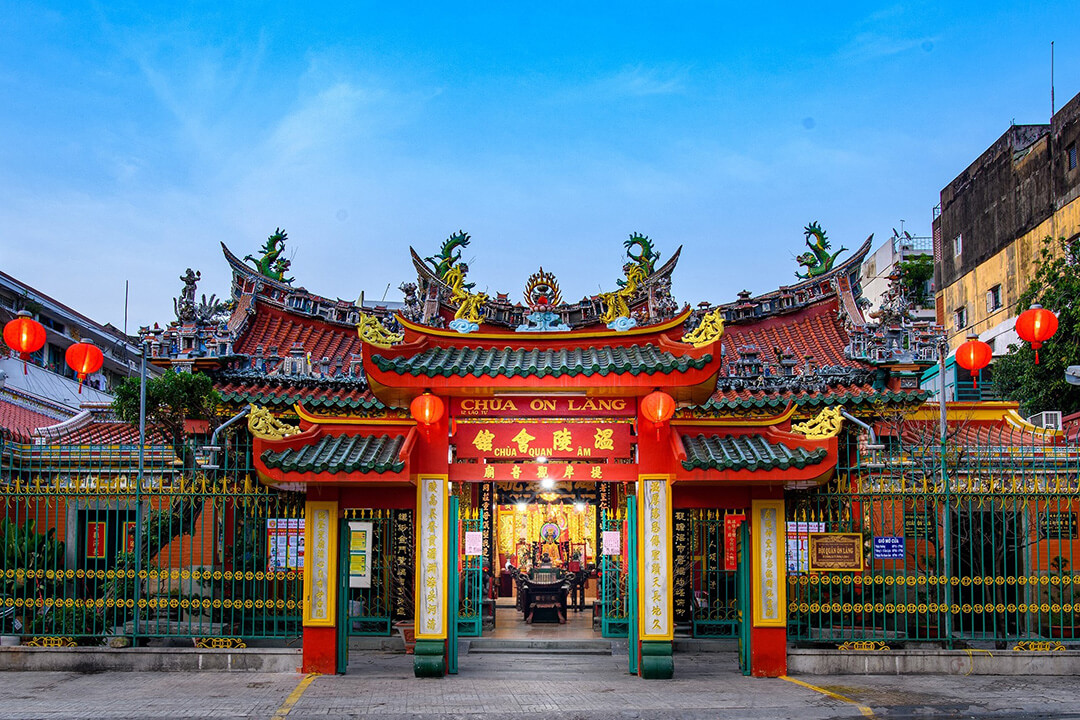Nov - 03 - 2025
Giac Vien Pagoda is a serene sanctuary tucked away from the hustle of Ho Chi Minh City, offering a deep glimpse into Vietnam’s spiritual and artistic heritage. Though lesser-known than other landmarks, it holds a cherished place among locals and history enthusiasts alike. With over two centuries of history, the pagoda showcases Southern Vietnamese architecture and exquisite wooden sculptures that reflect deep faith and artistry. Here at GTrip, we provide a comprehensive guide to uncover its rich history, explore its unique design, and experience this cultural treasure with respect and understanding.
Overview of Giac Vien Pagoda
- Address: 161/85/20 Lac Long Quan Street, Binh Thoi Ward (formerly District 11), Ho Chi Minh City
- Opening hours: 8:00 AM - 4:00 PM daily
- Entrance fee: Free, but donations are appreciated for maintenance
- Best time to visit:
- Weekday mornings: Ideal for those seeking peace and reflection, offering a serene atmosphere and uninterrupted time to admire the pagoda’s intricate art and architecture.
- Festive days: Visit during Vesak (15th day of the 4th lunar month) or Vu Lan (15th day of the 7th lunar month) to witness vibrant ceremonies and feel the communal spirit of Buddhist celebrations.
Giac Vien Pagoda, also known as Ho Dat Pagoda, tucked away in a quiet alley, its location adds to its tranquil and secluded atmosphere. It is one of the oldest pagodas in Ho Chi Minh City, standing as a testament to the region's rich Buddhist traditions. Officially recognized as a National Historical-Cultural Relic in 1993, it carefully preserves the distinctive traits of traditional Southern Vietnamese architecture. It also houses what many consider a museum-quality collection of wood carving artistry. It is an active spiritual center that provides a peaceful escape and a deep cultural experience for all who enter its gates.

Giac Vien Pagoda offers visitors a glimpse into Southern Vietnam’s Buddhist heritage through its centuries-old architecture, exquisite wood carvings
History of Giac Vien Pagoda
Giac Vien Pagoda traces its origins back to 1798, during the restoration of the nearby Giac Lam Pagoda. At that time, Ho Dat Wharf (the present-day site of Giac Vien) was used to store timber transported from the forest. To oversee the materials, Zen Master To Tong instructed his attendant to build a small hut, enshrining a statue of Guanyin along with Buddhist scriptures, bells, and ritual instruments.
Over time, this humble hut evolved into a small shrine where daily prayers and evening chants were held with unwavering devotion. Moved by the attendant’s sincerity, Master To Tong allowed him to construct a simple temple from wood and leaves, naming it Quan Am Vien (Guanyin Hall). In 1850, under the guidance of Master Tien Giac, the temple was renamed Giac Vien Pagoda, symbolizing enlightenment and completeness.
Throughout the centuries, Giac Vien has undergone numerous restorations yet continues to preserve its distinctive Southern Vietnamese architectural style and serene spiritual atmosphere. Major renovations took place under Zen Master Hoang An - Minh Khiem in 1869 and again in 1898, when the pagoda’s layout was expanded and the main hall rebuilt. Later restorations in 1908, the 1920s, and 1991 further enhanced its structure while maintaining its original harmony and simplicity.
In 1993, Giac Vien Pagoda was officially recognized as a National Historical-Cultural Relic, honoring its profound contribution to Vietnamese Buddhist culture. Today, it serves as both a place of worship and a living museum, celebrated for its ancient wooden sculptures, intricate carvings, and serene courtyards.

Founded in 1798, Giac Vien Pagoda is one of Ho Chi Minh City’s oldest temples, famed for its classic Southern Vietnamese architecture, ancient wooden sculptures
The unique architecture of Giac Vien Pagoda
The pagoda's architecture is a harmonious blend of traditional Southern Vietnamese style with subtle Western influences, creating a unique and venerable space. This fusion reflects the historical period of its construction and renovations, making it a place of worship and an architectural document.
Architectural style of Giac Vien Pagoda
Giac Vien Pagoda embodies the essence of Southern Vietnamese temple architecture, combining spiritual symbolism with artistic mastery. The complex includes a three-entrance gate, the main sanctuary, lecture hall, dining hall, and East–West corridors, all arranged in perfect symmetry. Its two connected four-pillar houses form the heart of the structure, the front as the main hall and the rear as the lecture and reception area.
Built in the traditional Southern style, the pagoda’s layout follows the Mandala-inspired “one compartment, two wings” design, dedicated to the Buddhas and patriarchs. The hall features a mix of eight wooden and eight concrete pillars, each decorated with delicate Western-inspired motifs and seven graceful arches. This unique blend reflects both local craftsmanship and subtle colonial influence. Inside, intricately carved wooden frames, gilded bao lam, hoanh phi, and lien doi panels shimmer in red and gold lacquer, showcasing refined artistry. The roof, made of Lai Thieu yin-yang tiles, is crowned with ceramic figures of the Four Sacred Beasts, dragon, qilin, turtle, and phoenix, representing prosperity, wisdom, longevity, and nobility.
Remarkable structures and artworks
Giac Vien Pagoda houses more than 120 Buddha statues, including Amitabha, Maitreya, Avalokitesvara, the Ten Kings of Hell, and the Eighteen Arhats. The ancestral altar honors three revered abbots who greatly contributed to the temple’s development.
Among its treasures are the Bao Lam Ba Dieu, a three-meter wood panel depicting a lively world of birds, and the Bao Lam Thap Bat La Han, featuring ten vividly carved Arhats. Other rare relics include a 19th-century ceramic statue of Giam Trai, wooden scripture panels, and royal gifts from the Nguyen Dynasty.
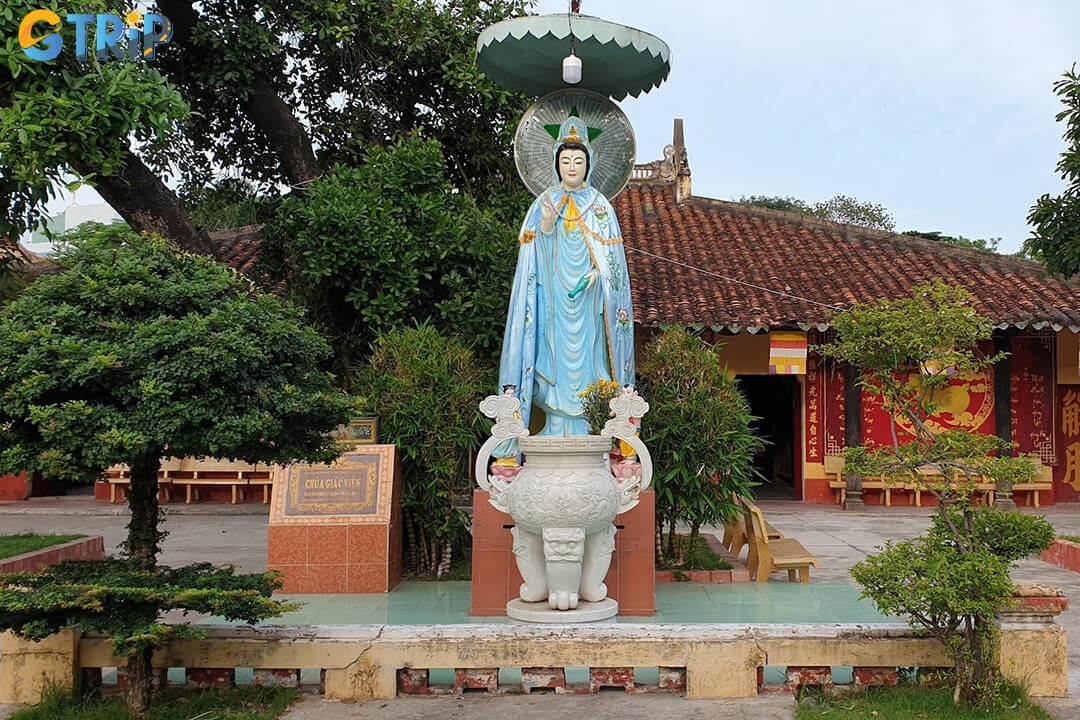
Giac Vien Pagoda preserves rare relics and ancestral altars that reflect centuries of devotion and artistic mastery
Things to do at Giac Vien Pagoda
Beyond being an architectural relic, the pagoda is a vibrant center for spiritual and community life, offering visitors a range of meaningful experiences. If you are a devout Buddhist, a lover of art and history, or simply a traveler seeking a moment of peace, Giac Vien has something to offer. It is a living heritage site where the past and present coexist in beautiful harmony.
Attend major Buddhist festivals
To experience the pagoda's spiritual pulse at its strongest, visit during major Buddhist festivals. During Vesak and the Vu Lan Festival, the normally quiet grounds come alive with profound reverence. The air becomes thick with the scent of incense and the sound of chanting. Visitors can witness and participate in solemn ceremonies, including moving Buddha bathing rituals where water is poured over a statue of the infant Buddha to purify the mind. These ceremonies also include formal processions and dharma talks delivered by senior monks. These festivals attract hundreds of Buddhists from across the city, creating a powerful atmosphere of shared faith and devotion. Attending is a unique opportunity to learn about Vietnamese Buddhist culture firsthand and join the community in praying for peace and well-being.

During Vesak and Vu Lan, Giac Vien Pagoda transforms into a vibrant spiritual center filled with incense, chanting, and sacred rituals
Admire ancient sculptural art
Giac Vien Pagoda is a paradise for anyone with an appreciation for fine art and craftsmanship. Instead of rushing through, take your time to truly observe the incredible detail of the pagoda’s treasures. Walk slowly through the main hall and study the 153 wooden statues, noting the subtle differences in their expressions, postures, and attire. Each statue tells a story and represents a different facet of Buddhist iconography. Pay special attention to the exquisite bao lam panels that adorn the hall. Lean in to appreciate the incredible skill of the openwork carving, where artisans transformed solid wood into intricate scenes teeming with life. Every detail, from the feather on a bird's wing to the fold in a scholar's robe, is a testament to the artistry of Southern Vietnam's master carvers and a direct link to the region's rich cultural history.
Highlighted sculptural masterpieces
Known as a “museum of wood sculpture”, Giac Vien Pagoda preserves over 50 intricately carved bao lam panels adorning its altars and doorways. Crafted by master artisans from the renowned Lai Thieu woodworking village, these pieces represent the height of traditional craftsmanship. Each one showcases exquisite openwork carving, where solid wood is meticulously transformed into delicate, lace-like forms. The themes are diverse, depicting Buddhist stories, folklore, and scenes from daily life. Notable examples include the “Ba Dieu” panel, depicting a lively forest of birds, and the “Eighteen Arhats” series, portraying the Buddha’s enlightened disciples. Other panels illustrate beloved tales such as The Fisherman’s Gain and Su Wu Herding Sheep, each reflecting moral and cultural lessons passed down through generations.
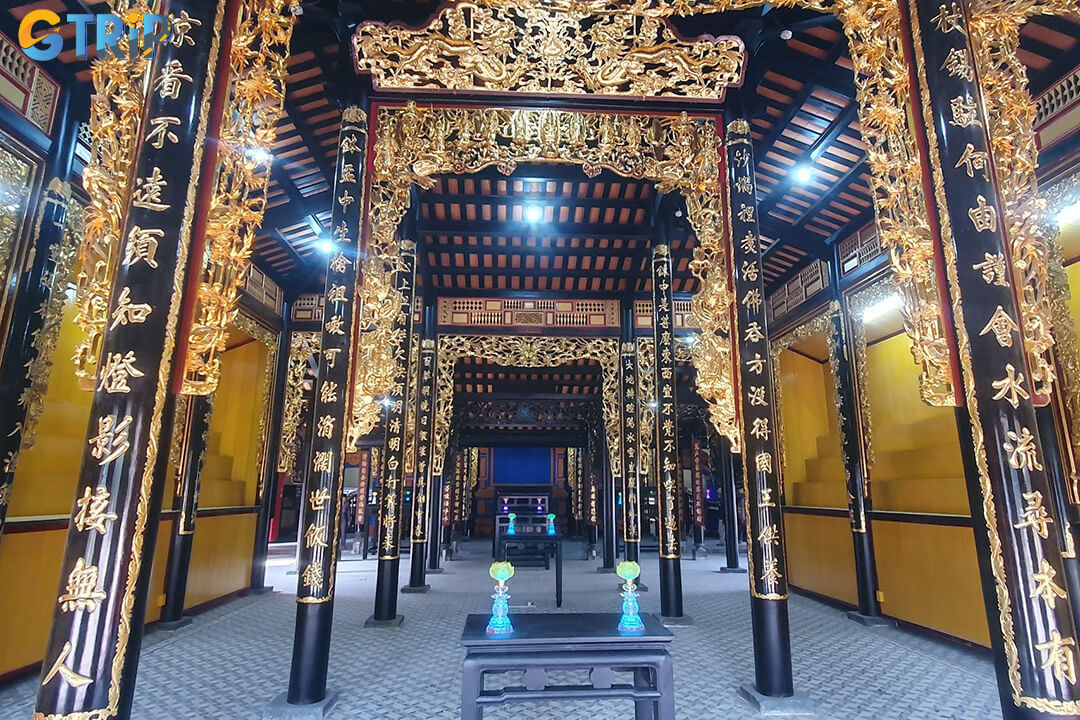
Giac Vien Pagoda, a “museum of wood sculpture,” houses over 50 delicate bao lam panels depicting Buddhist tales, folklore, and daily life
Visit the tomb tower garden
Behind the main pagoda complex lies a tranquil garden where the former abbots of Giac Vien have been laid to rest. This peaceful area is home to seven ancient tomb towers, each a unique architectural work of art. These multi-tiered stupas, built from brick and stone, vary in design and ornamentation, reflecting the era in which each master lived and served. The garden offers a quiet, shaded space for a gentle stroll and quiet reflection. It is a place to pay respects to the lineage of Buddhist masters who dedicated their lives to building and preserving the pagoda for future generations. The serene atmosphere, punctuated by the chirping of birds and the rustling of leaves, provides a perfect antidote to the noise and haste of modern city life.
Learn about community activities
Giac Vien Pagoda is a dynamic community hub deeply engaged in educational and charitable work. The pagoda actively spreads the Buddhist spirit of compassion through a variety of programs. It holds regular dharma classes for laypeople seeking to deepen their understanding of Buddhist philosophy. During the summer, it organizes popular youth retreats, providing young people with a positive environment to learn about mindfulness, ethics, and community service. Furthermore, the pagoda is known for its charity work, including organizing events for the underprivileged and regularly serving free vegetarian meals to visitors and those in need. Inquiring about these activities offers insight into the pagoda's vital role in the contemporary social fabric of Ho Chi Minh City.
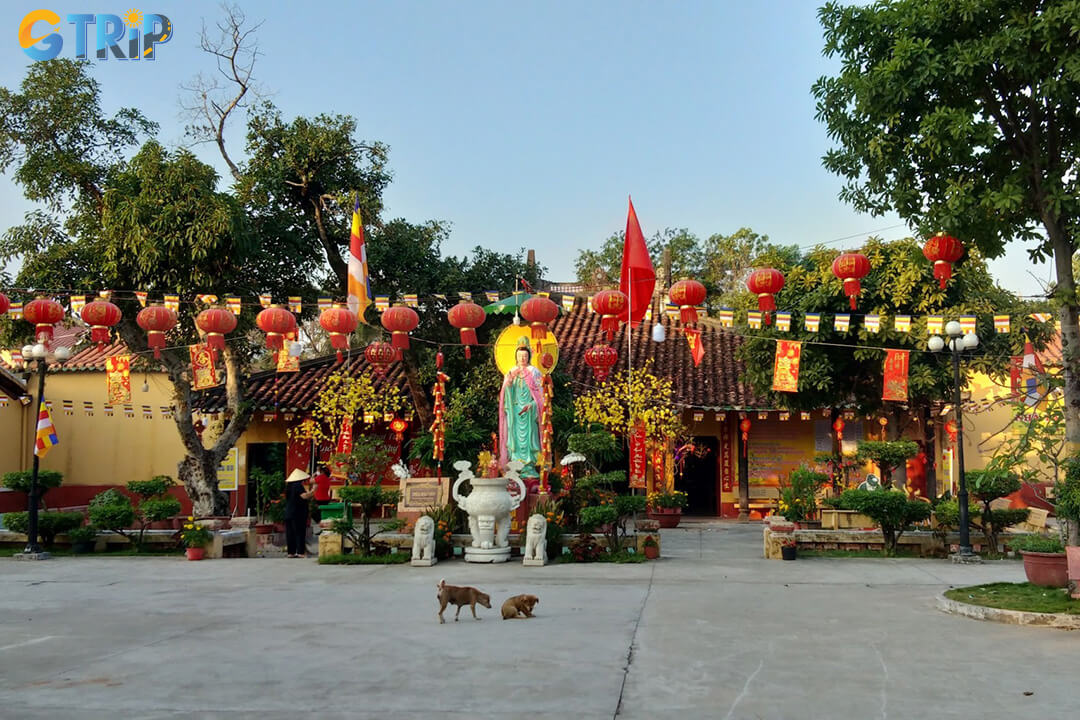
Giac Vien Pagoda serves as a vibrant community center, offering dharma classes, youth retreats, and charitable programs that embody Buddhist compassion
Pray for health and protection
For locals and visitors alike, Giac Vien Pagoda is a sacred place to seek spiritual comfort and blessings. A common and meaningful activity is to offer prayers at the various altars. People come to light sticks of incense, the smoke carrying their wishes and respects to the heavens, and bow before the statues of the Buddhas and Bodhisattvas. They pray for a wide range of intentions: for peace in the world, for the health and safety of their families, for success in their endeavors, and for guidance in their daily lives. This simple and personal ritual is open to all visitors, regardless of their faith. It is an opportunity to participate in a timeless tradition, connect with the spiritual energy of the space, and find a moment of inner peace amidst the silent, watchful gaze of the ancient statues.
How to get to Giac Vien Pagoda
Located in a quiet residential area of former District 11, reaching the pagoda requires a slight detour from the main tourist routes, but it is well worth the effort. Here are the most common ways to get there:
- By private vehicle (motorbike, car): This is a flexible way to visit. From the city center, navigate towards Lac Long Quan Street. The entrance to the pagoda is down a small alley marked with a sign at address number 161. Drive into the alley and follow the signs. There is visitor parking available on site, usually managed by a local attendant.
- By bus: For a more local experience, several public bus routes stop near the pagoda. The most convenient are routes 62, 145, and 148. From the bus stop on Lac Long Quan Street, you will need to take a short walk of about 5-10 minutes down the alley to reach the pagoda entrance.
- By taxi/ride-hailing service: The most convenient and direct option for visitors is to use a taxi or a ride-hailing app like Grab, Be or XanhSM. Simply input "Giac Vien Pagoda" or its Vietnamese name, "Chua Giac Vien," as your destination. The driver can take you directly to the entrance of the alley, saving you the trouble of navigating.
Nearby attractions to Giac Vien Pagoda
After immersing yourself in the tranquility of Giac Vien Pagoda, you can easily explore several other interesting attractions in the vicinity. Combining your visit with these nearby sites can make for a full and varied day of exploration.
- Dam Sen Cultural Park: A complete contrast to the pagoda's peace, Dam Sen Cultural Park is one of Ho Chi Minh City's largest and most popular amusement parks. It offers a sprawling complex with a zoo, an aquarium, water park slides, and a wide variety of amusement rides. It’s an ideal spot for families or anyone looking to inject some modern fun and excitement into their day after a quiet cultural visit.
- Giac Lam Pagoda: A visit to Giac Vien is incomplete without seeing its "mother" pagoda. Giac Lam Pagoda, just a short drive away, is one of the absolute oldest and most important pagodas in Ho Chi Minh City, founded in 1744. Its historical and architectural significance is immense, and visiting both pagodas provides a deeper understanding of the lineage and development of Buddhism in old Saigon.
- Dam Sen Flower Market: For a completely different sensory experience, head to the Dam Sen Flower Market. This bustling, wholesale market is most vibrant in the early morning hours when vendors from all over the region arrive with truckloads of fresh flowers. It is a wonderfully chaotic and fragrant place, offering a kaleidoscope of colors and a fascinating look at the local flower trade.
- Phu Tho Horse Racing Ground: For a truly unique local experience, check the schedule for the Phu Tho Horse Racing Ground. This is a unique historical venue as the only horse racing track in the city, with a history stretching back to the French colonial era. Attending a race on a weekend offers a slice of local life and entertainment that few tourists get to see.

After visiting Giac Vien Pagoda, explore nearby attractions like Dam Sen Cultural Park for a full day of cultural, historical, and local experiences
Practical tips for visiting Giac Vien Pagoda
To ensure your visit is enjoyable and respectful, please keep these simple guidelines in mind. Following local customs shows your appreciation for the sanctity of this spiritual place.
- Dress modestly: As a place of worship, it is crucial to show respect. This means wearing clothing that covers your shoulders and knees. Avoid shorts, tank tops, and revealing outfits. This simple gesture is greatly appreciated by the monastic community and local worshippers.
- Keep quiet: The pagoda is a sanctuary for prayer and meditation. Maintain the peaceful atmosphere by speaking softly and avoiding loud conversations. Turn your phone to silent mode to prevent disrupting the monks and other visitors seeking tranquility.
- Respect the artifacts: You are visiting a National Historical-Cultural Relic. The statues, wooden carvings, and other artifacts are priceless and irreplaceable. Please admire them from a distance and do not touch any of them. The oils and dirt from hands can cause damage over time.
- Be sincere: If you are praying or simply observing, approach your visit with a sincere and respectful attitude. The spirit of Buddhism is rooted in compassion and goodwill. A mindful presence honors the sacredness of the space and the traditions it upholds.
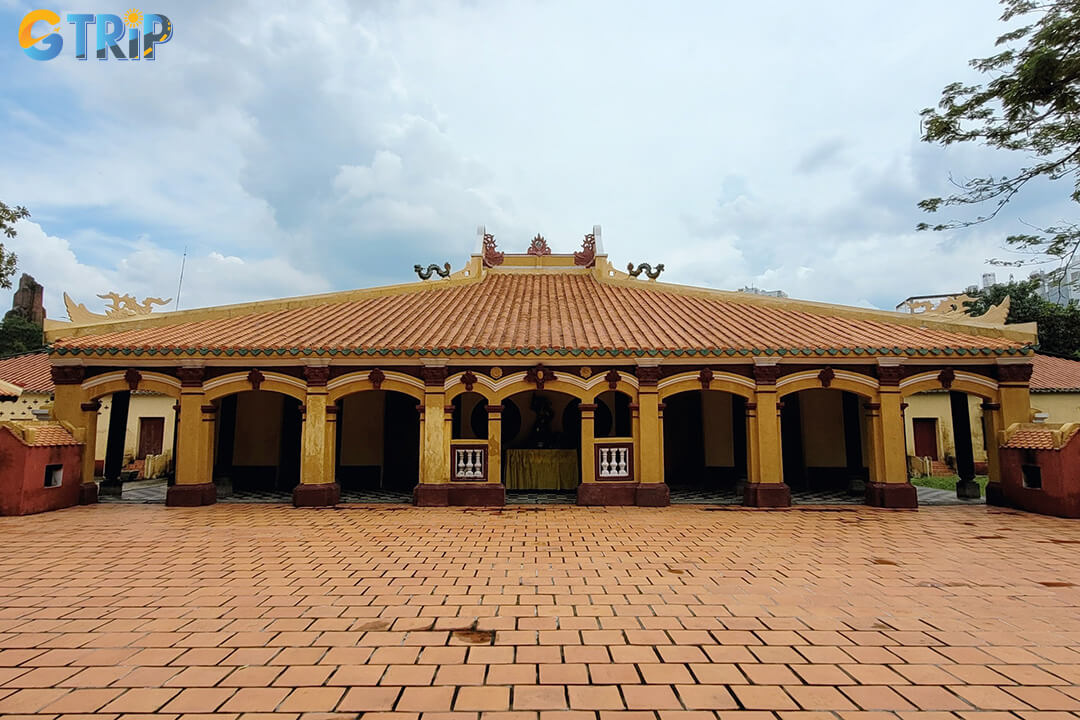
When visiting Giac Vieb Pagoda, you should dress modestly, keep quiet, avoid touching sacred artefacts, and approach your visit
Giac Vien Pagoda offers visitors a rare opportunity to step away from the modern world and connect with a legacy of spiritual devotion, extraordinary artistry, and profound history. It stands as a quiet yet powerful testament to the enduring cultural identity of Southern Vietnam. For any traveler in Ho Chi Minh City seeking an experience that is authentic, peaceful, and deeply enriching, a visit to this remarkable pagoda is an absolute must. GTrip - Vietnam Travel Agency encourages you to take the time to explore this hidden gem and discover the timeless beauty and serenity it holds within its ancient walls.

